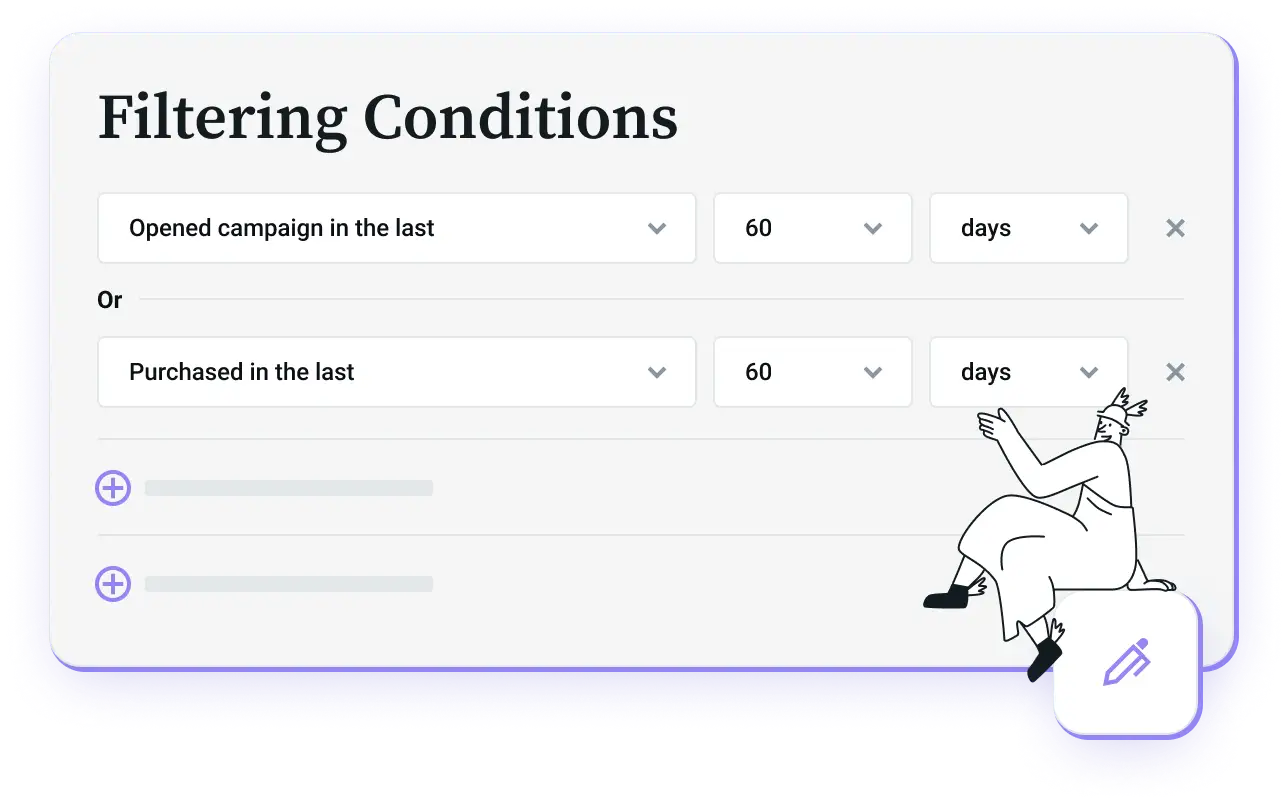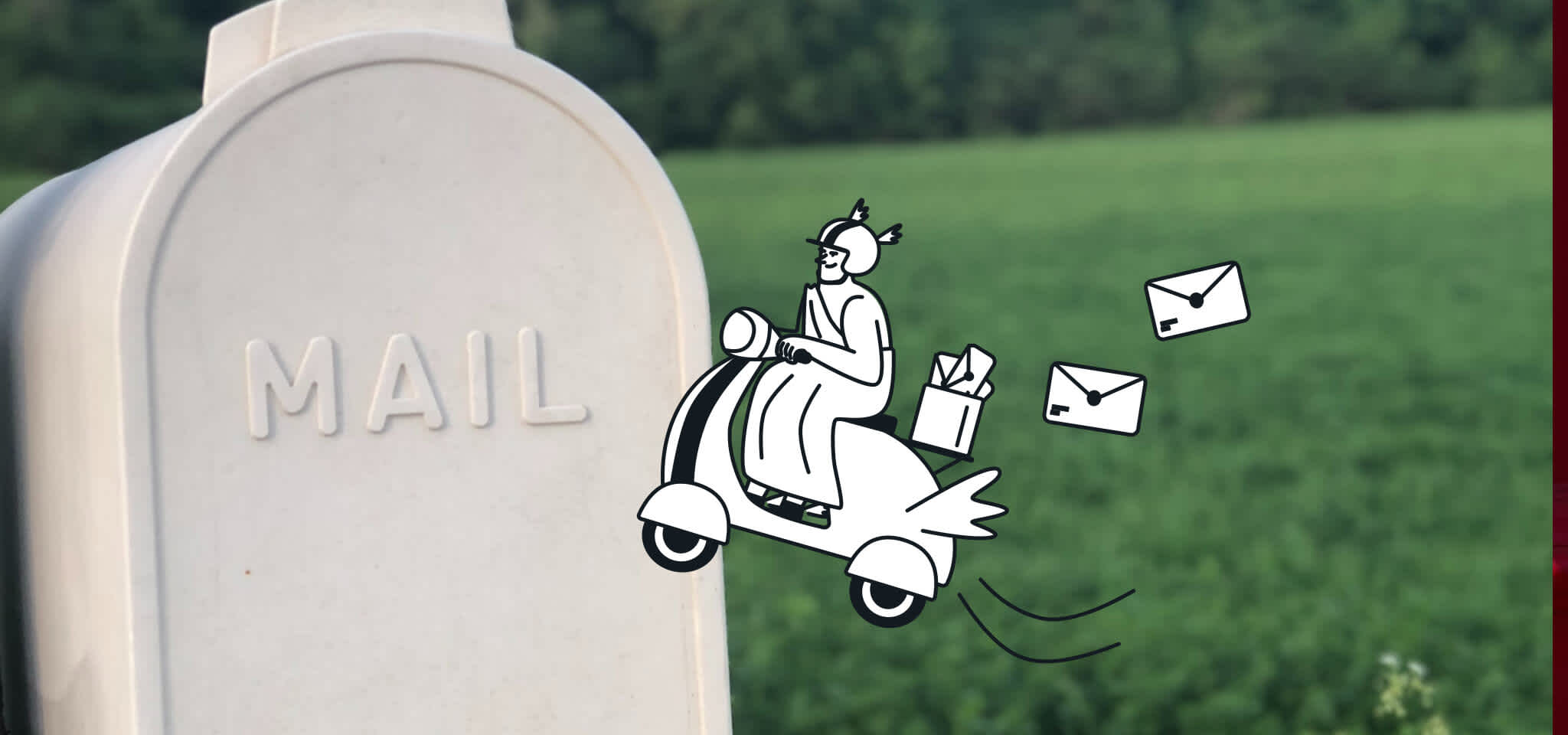Deliverability
Sunset policies in your email program
Email deliverability rules have changed. It’s not a numbers game anymore where more email addresses equal more potential customers. In this article, we’ll dive into what a sunset policy is, how to use one, and share its potential benefits.

PUBLISHED ON
Email deliverability rules have changed. It’s not a numbers game anymore where more email addresses equal more potential customers. In fact, new laws actually penalize you for sending too many emails that go unopened. Enter the need for an email sunset policy.
Using your sunset policy with a subscriber list isn’t quite as scary as the B-roll from your favorite horror movie. However, many professionals may feel anxious or uncertain about implementing sunset policies. Usually, it’s rooted in the fear that no one will show up to your party if you don’t send massive amounts of emails to as many people as possible (aka the "quantity over quality" mindset).
This is simply not true.
In fact, sunset policies can actually increase engagement by targeting your messaging to an audience already interested in what you have to say.
In this article, we’ll dive into what a sunset policy is, how to use one, and share its potential benefits.
Table of contents
Email deliverability’s importance and how a sunset policy can help
How to implement a sunset policy
Tips for maintaining re-engaged subscribers
Tips for spotting disengaged contacts
1. What is an email sunset policy?
2. Why should I implement a sunset policy in my email marketing?
3. How long should I wait before sunsetting inactive subscribers?
4. Should I try to re-engage users before removing them?
5. Will removing inactive subscribers hurt my business?
Table of contents
What is a sunset policy?
A sunset policy is a common email segmentation strategy that identifies and discontinues sending emails to disengaged contacts or subscribers who don’t open your emails. Sunsetting is the process of nudging them to see if they would like to continue receiving email blasts from your company or organization.
How do sunset policies work? Generally, you’ll send an email asking your subscribers if they’re ready to re-engage or would prefer to unsubscribe. That could be a simple email with some tasteful emojis, or a video of you singing “Happy Trails” or “Somebody That I Used To Know” – whatever works, as long as it’s on-brand and gets your point across.
Below is an example of a re-engagement email that Mailjet sent to its subscribers:

Nothing says “come back” more than a pug wrapped in a blanket…
The email is playful (who doesn’t like cute dogs?) but the message is clear and empathetic: Do you want us to keep sending you emails?
Sunset policies exist to improve email marketing and increase deliverability. One key to deliverability is focusing on recipients who genuinely want to receive your emails. By segmenting your subscribers based on engagement, you can easily focus on those currently interested in your products and services. Your engaged subscribers will help you target your messaging to increase sales for products or services.
A sunset policy is very different from actively cleaning your list. With a sunset policy, you stop sending messages to subscribers whose engagement has diminished over a period of time – segmenting them within your email marketing platform without unsubscribing them. This point is critical. When you clean your email list, you permanently delete subscribers. With a sunset policy, rather than delete your disengaged subscribers, you separate them by putting them into a would-be timeout, but you can still reach out to them any time you wish.
Email deliverability’s importance and how a sunset policy can help
Behind every email is a series of technical steps your message goes through before reaching its intended recipient. Email clients sort and deliver messages based on how these steps correspond – and the recipients' behavior.
Don't trust us? Check out Gmail and Yahoo's email deliverability policies for bulk senders in 2024. You'll see a combination of technical and user engagement requirements. Microsoft also rolled their own list of requirements in May 2025.
Email deliverability measures a sender's ability to reach the inbox instead of the spam folder. It's also a crucial factor for assessing the success of your email marketing. Two variables you can control that affect deliverability include engagement and reputation. Both rely heavily on whether your email contacts open, read, and click through to your emails:
Subscriber engagement: By demonstrating value, you can drive up deliverability rates. The secret sauce to subscriber engagement is finding out what your customers want to know and delivering it. Segmenting your audience and studying click-throughs will help target messaging to increase engagement.
Sender reputation: This is a score assigned by your subscriber’s email service provider (ESP). While Google and other internet service providers hold their cards close to their chest when it comes to inboxing, there are five factors under our control which influence sender reputation scores: engagement, quality, frequency, open rates, and authenticity. Internet service providers (ISPs) may block a disreputable sender’s emails and send them straight to the spam folder.
Sunset policies help with deliverability because they segment your subscribers into those who engage with your content and those who do not. Analyzing your stats, including open and click-through rates, will help you build content that your subscribers want.
The formula is: valuable content plus engaged audience equals high deliverability. Think of disengaged contacts as dead weight.
Sunset policy benefits
Using sunset policies has some great benefits. You can have a sunset provision automatically segment disengaged contacts after a period of time elapses without engagement. Email automation gives you the freedom to focus on what’s really important – creating high-value emails.
Effective email marketing relies on reaching your subscribers (deliverability) and delivering valuable content with a specific call-to-action.
Stronger engagement helps your business stay consistent and allows for growth. Instead of trying to lure back customers who aren’t interested, you can spend more time tailoring your messaging to those who will use your goods and services.
How to implement a sunset policy
There’s a magic ingredient in sunset provisions: segmentation.
To make segmentation work for you, first, you’ll need to figure out how to separate engaged subscribers from unengaged ones. Depending on how frequently you send emails, generally, we consider subscribers disengaged after three to six months of silence.
If you send emails biweekly, you’re probably okay if you filter recipients who haven’t engaged in a couple of months. However, if you send emails daily, make sure you exclude disengaged contacts much sooner, and avoid sending an email influx to uninterested subscribers. That may set your email campaign up for failure due to a lack of deliverability.
Once you’ve identified your email sunset policy parameters, you can use automation to segment and exclude your unengaged recipients.
Tips for maintaining re-engaged subscribers
So you’ve segmented your list and re-engaged your subscribers. Now it’s time to maintain your active audience with ideas like these:
Use a confirmed opt-in process to sign up for your email list.
Filter unverified or invalid email addresses.
Encourage recipients to hit “reply” when responding to your email blasts.
Check email engagement regularly.
Segment your audience correctly.
Use authentication to ensure deliverability.
Tips for spotting disengaged contacts
Yes, parting can be such sweet sorrow. Nevertheless, learning to spot disengaged subscribers is just as important as effectively engaging with your audience. When searching for disengaged email contacts wondering if it’s time to politely say “goodbye,” ask yourself:
Has less than six months passed since the subscriber last opened one of your emails?
Has the subscriber reached out in another way, like social media?
When the subscriber opens the email, are they clicking through?
Is the contact opening certain emails but not all others?
If you answered “no” more than once, It might be time to segment a subscriber or remove them from your active email campaign altogether. Conversely, you can use segmentation to send just a few of the more prominent emails to specific subscribers on your list, for example, when implementing your holiday emails.
What will happen if you don’t use an email sunset policy?
Your biggest risk for not implementing an email sunset policy is damaging your deliverability. Continuing to send to unengaged contacts weakens your email program’s effectiveness. Additionally, ISPs tend to frown on this behavior. They may begin segmenting you to the subscriber’s spam folder. ISPs view unopened or deleted emails as junk, which decreases trust or authenticity and your reputation as a sender.
Despite this, data from Mailjet’s Road to the inbox: Navigating email deliverability in 2025 report found only about 24% of respondents have a sunset policy for removing or segmenting unengaged subscribers. Nearly 59% have no policy and another 17% are unsure.
Do you use a sunset policy to periodically remove or segment unengaged email subscribers?
Sunsetting with Mailjet
Mailjet’s segmentation tools help you sort (not purge!) your email subscriber list based on the categories you want. This ensures your message’s are targeted and well-received.

Target your audience with a segment using Mailjet’s segmentation tools.
When you’re ready to create engaging new emails, Mailjet’s customizable email templates allow you to craft messages to send to any of your segmented audiences. After sending, you can use Mailjet’s analytics tools to better understand what worked well and identify areas for improvement.

Mailjet’s analytics tools provide a performance snapshot of your marketing campaigns.
Sign up now to see how Mailjet can help you segment your contacts and send better, more engaging emails.
Sunset policy takeaways
Hopefully, you’ve learned some information to make sunset policies seem far less frightening. Remember, it’s less about the “goodbye” and more about the “see you later.” Implementing a sunset policy can help deliverability and allow you to focus on your more dedicated audience. If this is the first time you’re implementing an email sunset policy, remember, we’re here to help you make sure you set firm schedules and guidelines to get the best results.
You’ll be reaping the benefits of a sharper, more engaged email list in no time, one that shines well beyond the horizon. Happy sending!
FAQ – Email sunset policies
1. What is an email sunset policy?
An email sunset policy is a strategy used to gradually stop sending emails to unengaged subscribers after a certain period of inactivity. It helps maintain a healthy email list, improve deliverability, and protect your sender reputation.
2. Why should I implement a sunset policy in my email marketing?
Sunset policies help reduce bounce rates, spam complaints, and engagement declines. By focusing on active subscribers, your campaigns perform better and are less likely to be flagged by inbox providers like Gmail or Outlook.
3. How long should I wait before sunsetting inactive subscribers?
There’s no one-size-fits-all rule, but many marketers start considering sunset actions after 3–6 months of no opens or clicks. High-frequency senders may sunset sooner, while others might wait up to 12 months depending on engagement cycles.
4. Should I try to re-engage users before removing them?
Absolutely. A sunset policy should include a re-engagement or win-back campaign. Give subscribers a final opportunity to stay on your list with a clear, compelling message—then remove those who still don’t respond.
5. Will removing inactive subscribers hurt my business?
No – in fact, it usually helps. While it might feel counterintuitive to delete contacts, keeping disengaged users can harm your deliverability and inflate your costs. A smaller, engaged list is far more valuable than a large, inactive one.








